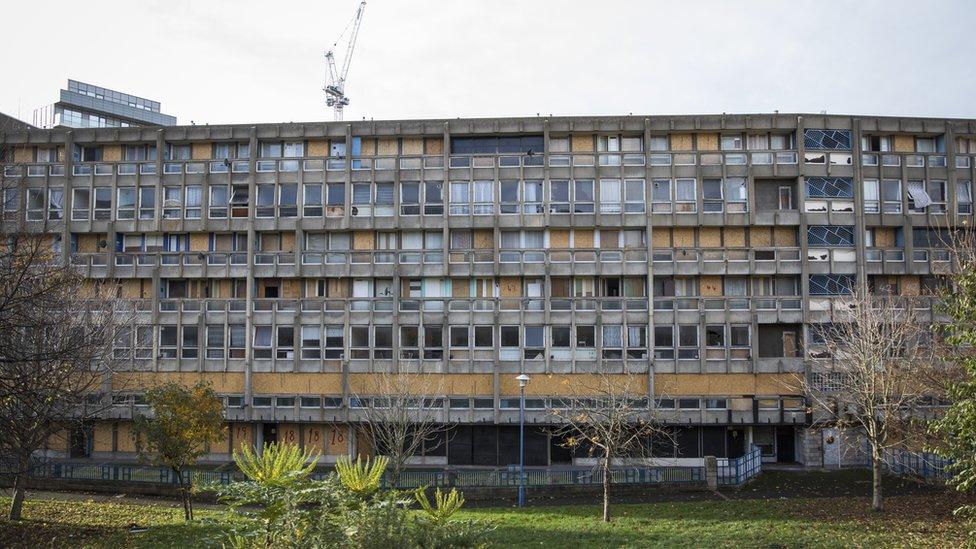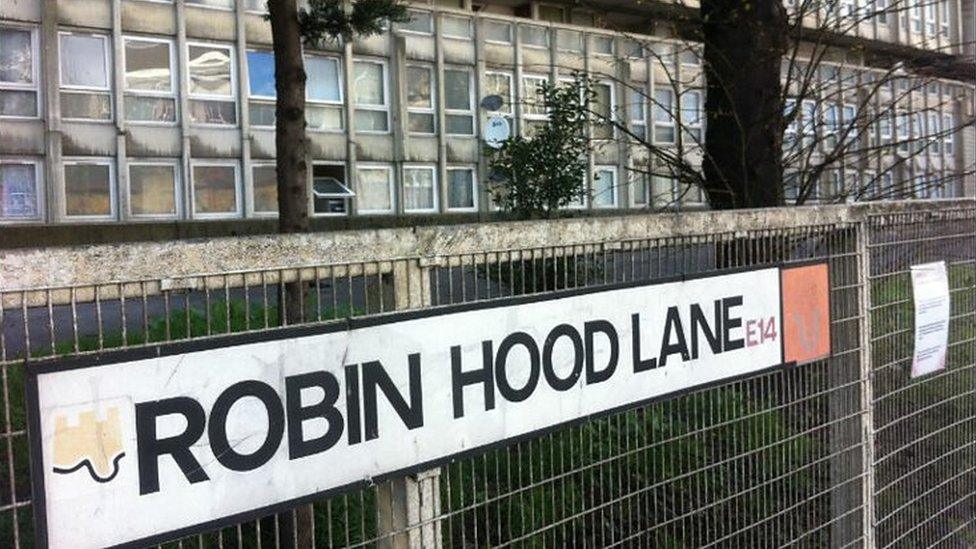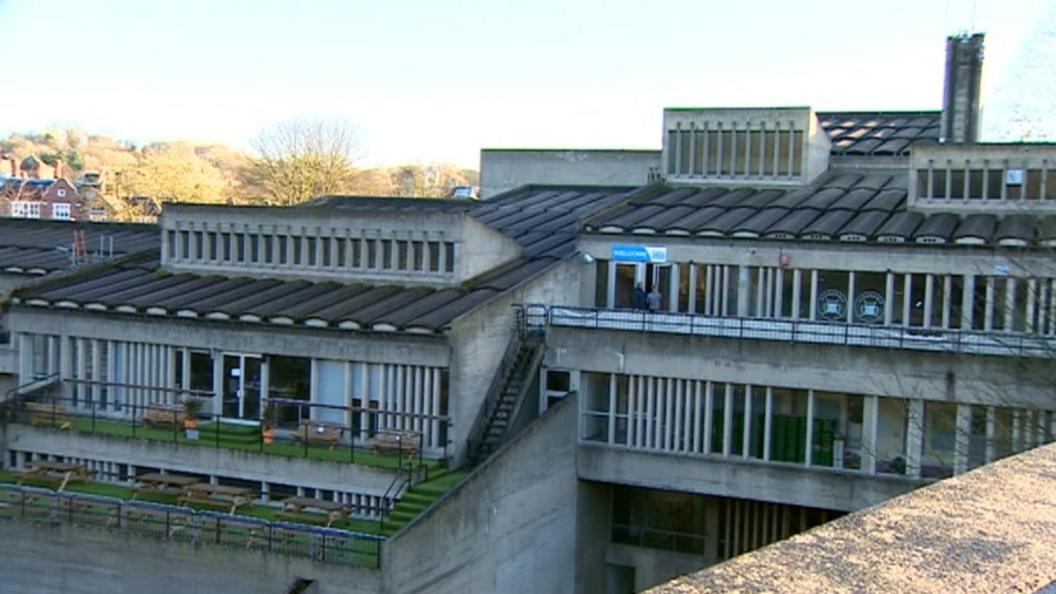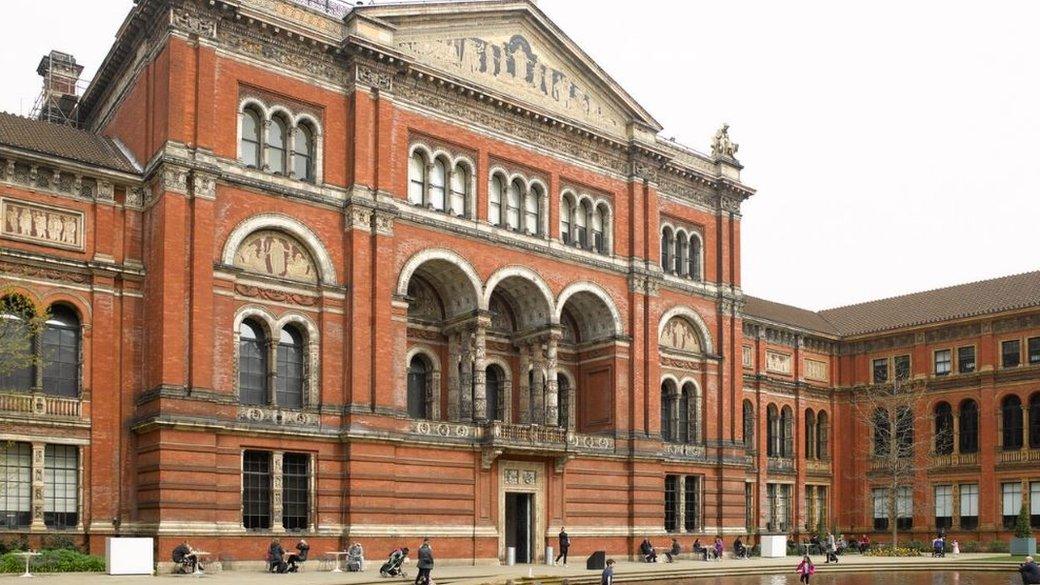V&A to display Brutalist flats at museum
- Published

Robin Hood Gardens was built in 1972
The Victoria & Albert Museum is to display a three-storey section of an east London council estate as an example of Brutalist architecture.
The section, which includes two flats, exterior facades and two interior staircases, has been acquired from Robin Hood Gardens in Poplar.
Designed by renowned British architects Alison and Peter Smithson, the block is due to be demolished and redeveloped.
The V&A has called it a "significant example of the Brutalist movement".
Brutalism, a movement characterised by exposed concrete in geometric patterns, arose in the 1950s.

Demolition was approved in 2015
It is regarded as a reaction to modernism, which consisted of elegant glass and steel structures.
Robin Hood Gardens was built in 1972 by the Greater London Council (GLC) and was later transferred to the local authority of Tower Hamlets.
The choice of Alison and Peter Smithson as architects gave the husband and wife team their only opportunity to create a council estate.
Allow X content?
This article contains content provided by X. We ask for your permission before anything is loaded, as they may be using cookies and other technologies. You may want to read X’s cookie policy, external and privacy policy, external before accepting. To view this content choose ‘accept and continue’.
Robin Hood Gardens was the result of their research in and vision for social housing.
It is distinctive for its noise-reducing features, like exterior concrete fins, and its elevated walkways, known as "streets in the sky".
The Smithsons said they regarded Robin Hood Gardens as "a demonstration of a more enjoyable way of living [and] a model, an exemplar, of a new mode of urban organisation."
A V&A spokesman said no decisions had yet been made on where and how the structure would be displayed.

Follow us on Facebook, external, on Twitter @BBCNewsEnts, external, or on Instagram at bbcnewsents, external. If you have a story suggestion email entertainment.news@bbc.co.uk.
- Published23 December 2016

- Published29 April 2016
